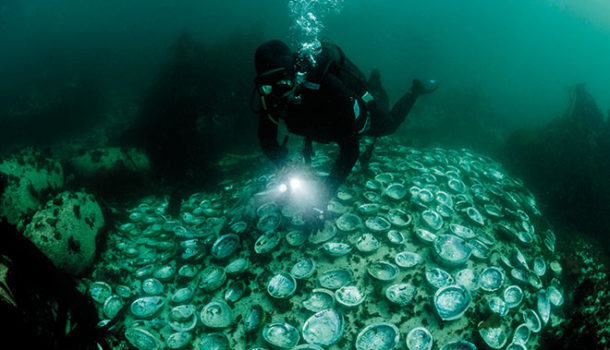Wild abalone populations have plummeted owing to decades of illegal harvesting. Farming this peculiar sea snail, however, could well save it from commercial extinction, claims Richard Clark, MD of Wild Coast Abalone Farm. He spoke to Marion Whitehead
Why did you start this abalone farm outside Haga Haga?
This region is particularly conducive to growing abalone, and we were lucky enough to find a suitable property next to the ocean at Haga Haga where we could pump clean seawater.
Are there benefits for the community?
We employ more than 200 people, which is a large contribution to one of the poorest areas in the Eastern Cape.
How can abalone farming help prevent poaching?
Abalone farms produce excess abalone spat (babies); this is what feeds abalone ranching, a relatively new concept where abalone are planted back into the ocean to grow naturally. Eventually, ranching companies will be allowed to harvest a portion of the planted abalone.
Obviously, if the ranching companies hope to make a return in future, they will have protect the resource. This is where a direct impact is made on the poaching problem.
How is abalone farming different to, for instance, farming rhino and harvesting their horns for trade?
Personally, I don’t believe that one can change the behaviour of consumers by changing the supply. The answer lies in educating consumers about rhino horn.
With abalone, the whole animal is consumed as a food, in the same price range as lobster. There are different drivers to poaching abalone, and it’s
also a highly complex field with no simple answers.
How serious is the abalone crisis?
Very serious. Various sources put the illegal export of South African abalone at more than 2 500 tons a year. To put this into perspective, all the abalone farms in South Africa together only produce about 1 500 tons of abalone per year. Because the natural abalone resource is so under pressure, the total allowable catch from the wild is less than 100 tons.
Is abalone protected?
Yes, it is illegal to harvest abalone from the wild without the requisite permits. These are only issued in very limited numbers to commercial quota holders.
What makes South African abalone so sought after?
SA abalone has a very good size and flavour. Our abalone has a reputation for good quality in Hong Kong and China, where more than 95% of our abalone ends up. It’s eaten at festivities such as weddings, and business deals.
What are the biggest challenges facing abalone farmers?
Illegal product in the marketplace, which damages our image as a high–quality producer. Illegal abalone, per definition, is not subject to the same health and quality standards as legal product. We all fear the day that some consumer gets ill from consuming an illegally sold South African abalone. This could be potentially disastrous.
What about abalone in the wild –what are you doing to help them?
Ranching companies are now planting abalone back into the ocean and also looking after the resource. Collectively, the ranching companies have put back about 1.8 million abalone to date. This will ramp up significantly in future.
Can the public do anything to help?
Yes; report any suspicious activities to the local police or to the Department of Agriculture, Forestry and Fisheries’s central compliance operations room at Hermanus on 028 312 2601.
Photography National Geographic
(This article was first published in the winter 2016 issue of AA traveller magazine)




